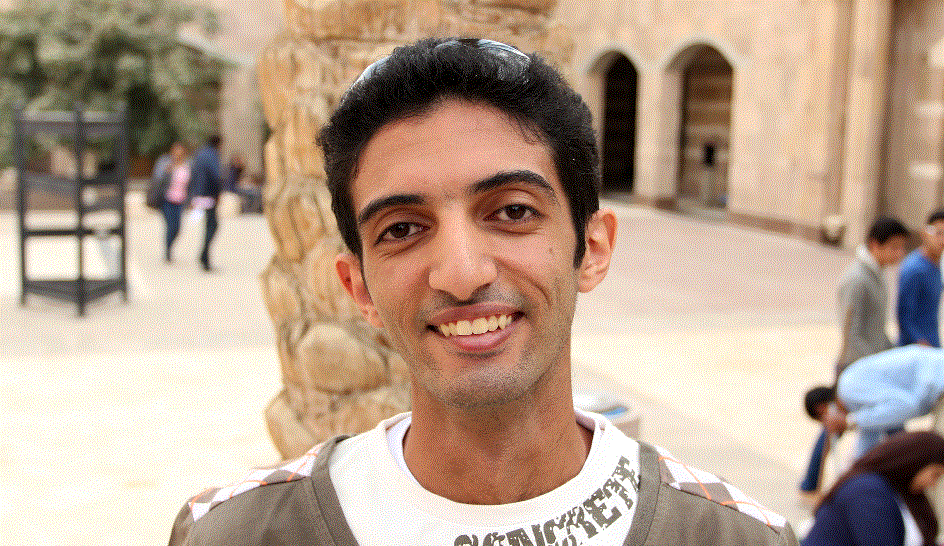
An undergraduate student has designed a device that enables users to observe invisible particles; including atoms, DNA and protein.
Mahmoud El-Makrizi, majoring in Biology and minoring in Math, chemistry and physics, has worked under the supervision of his physics Professor, Mohamed Swillam, for a year to complete the project.
His colleague, Mostafa Hendawy, helped him at the beginning of the project; he took the lead afterwards.
El Makrizi explained that his aim was to create a microscope with a shape and size similar to the ones used in high school – that can detect bacteria tissues, etc. – that would enable users to observe nanoparticles such as atoms.
“If you are familiar with Star Trek there is this part in the movie where they shoot a light beam on something and then they move it. Our device can actually do this; but not with large-scale objects. It can do it with small particles small enough to be drugs [or] medicine of any kind; you can actually move [the medicine] around inside the body without actually opening the body,” said El Makrizi.
El-Makrizi said that Mohamad Swillam, Assistant Professor of physics, who had been working in University of Toronto as a research scientist for three years and came to teach optics at AUC, initially proposed the idea.
“The idea was based on my previous work in Canada in 2010. When I started teaching optics I integrated all the research I did, and I found that by these findings we can improve the research,” said Swillam.
He added that he gave El-Makrizi the preliminary idea and conducted many trials until big results were achieved.
He explained that he was able to invent the device, which allows light to be used in order to see atomic particles.
El-Makrizi said that their device has a resolution of 200 nanometers; a trillion times smaller than a meter.
Swillam added that the device could be used for a number of purposes, some of which are in the electronic and the biomedical fields.
“The application of this device is very important for the electronic field because [scientists] are trying to make the transistor vey tiny and with this high focusing power you can make the transistor much smaller than what [is available in the field] right now. [The microscope] also has very good biological application because you can see things like DNA and protein,” said Swillam.
El-Makrizi created the device as a project for his physics minor. But, he was also interested in the project because the device has important results that will serve his biology major.
Swillam and El-Makrizi said that their project is almost complete and that they have a paper that is being reviewed now for submission. They also have a copyright on the device, which has been registered in the United States.
El Makrizi explained that although there have been designs similar to theirs, no one has ever created something like their microscope. They added that members of their field of study claimed that what they managed to achieve was impossible; which is why they are interested in knowing the physics behind it.
“The ability to use normal visible light to see the range of 200 nanometers theoretically speaking was possible, but practically speaking they thought it would be impossible to reach it; however, this design proves otherwise,” stated El- Makrizi.
He further explained that students who tried to work on this device claimed that the device would cost a lot of funds; on the other hand, his device cost much less than expected and can be easily designed.
El-Makirizi said that they are not manufacturing the microscope in order to test it practically.
“We are confident, because our tests are computer based, that when we apply it to practice it will hopefully work,” he said.